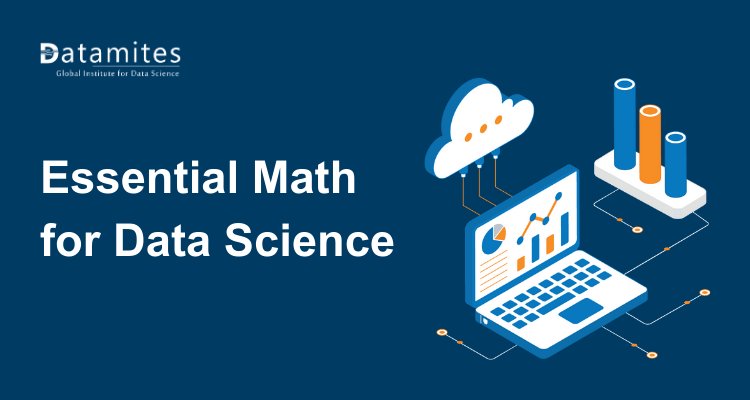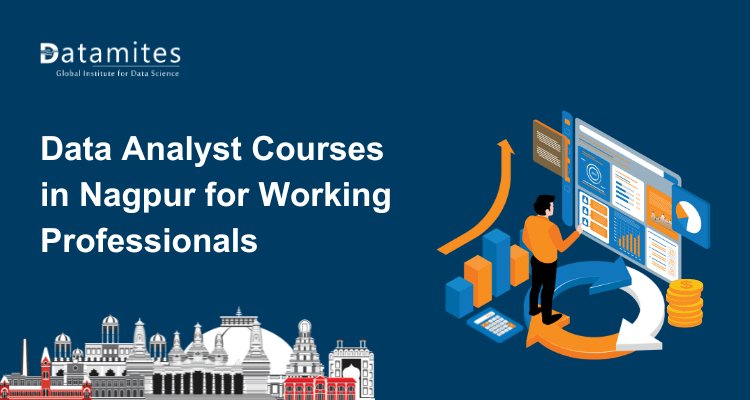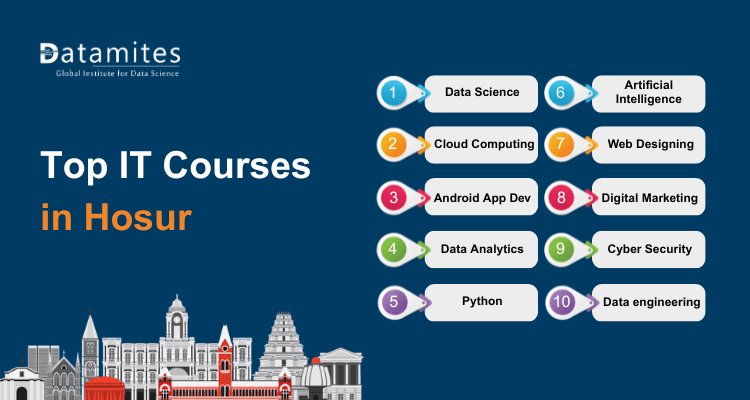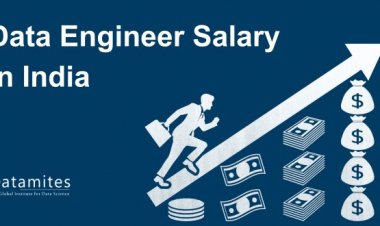Essential Math for Data Science: Key Concepts You Must Know
This blog explores the essential math concepts crucial for data science success. It covers key areas like statistics, probability, linear algebra, and calculus to strengthen analytical skills.

Math might not be the first thing you think about when diving into data science, especially with so many powerful tools doing the heavy lifting. But here’s the truth, without math, you’re just pressing buttons without really knowing what’s happening. If you want to build reliable models, interpret results with confidence, and actually grow in your data science career, you need the right foundations. This guide breaks down the essential math for data science, no fluff, just what matters.
Why Math is Crucial in Data Science
Data science looks flashy on the surface, clean dashboards, interactive charts, AI making predictions, but underneath it all, it’s math doing the heavy lifting. Every algorithm, from simple linear regression to complex deep learning networks, is built on mathematical principles.
Math matters because:
- It drives algorithms: Linear algebra and calculus explain how models learn and optimize.
- It validates results: Probability and statistics help you measure accuracy, uncertainty, and significance.
- It builds intuition: With math, you can look beyond the “black box” and actually understand why a model behaves the way it does.
The data science platform market is projected to grow from $120.49 billion in 2024 to $154.79 billion in 2025, a 28.5% CAGR, according to Research and Markets. Succeeding in data science doesn’t require a PhD or advanced math skills; what matters is a solid grasp of the core concepts, which enables you to use tools effectively, troubleshoot issues, and confidently explain and improve your models.
Refer to these articles:
- The Anatomy of a Data Science Project
- How to Build Data Pipelines: Step-by-Step Guide
- What Is Regression Analysis in Data Science?
The Core Math Topics You Need
Not all math is created equal when it comes to data science. You don’t need to dive into abstract proofs or memorize endless formulas. What you really need is a solid grasp of the math that shows up again and again in real projects. Let’s break it down.
- Linear Algebra – vectors, matrices, eigenvalues, and operations that power everything from recommendations to deep learning.
- Probability & Statistics – distributions, expectation, variance, conditional probability, hypothesis testing, and the foundations of uncertainty.
- Calculus – derivatives, gradients, and optimization concepts that sit underneath machine learning algorithms.
- Discrete Math & Logic – counting, combinatorics, and reasoning skills that strengthen algorithms and data structures.
Start with linear algebra, probability and statistics, plus some basic calculus. Add discrete math later if needed. Mastering these three areas will cover most data science challenges.
Applications of Math in Data Science (With Real-World Examples)
Math becomes powerful when it’s applied to real problems. Here’s how different branches of math for data science translate into real-world applications.
1. Recommendation Systems
Recommendation engines rely on linear algebra to analyze huge datasets of user preferences. They break down user-item matrices to uncover hidden relationships between products and people.
Netflix uses this math to suggest shows based on your watch history, while Amazon applies it to recommend products you’re likely to buy.
2. Fraud Detection
Probability and statistics are used to model “normal” transaction behavior. Any transaction that significantly deviates from expected patterns is flagged as suspicious.
Credit card companies detect fraud by comparing a user’s current spending pattern with their historical data. A sudden overseas purchase or unusually high amount triggers an alert.
3. Natural Language Processing (NLP)
Linear algebra represents words as vectors (embeddings), while calculus powers the optimization algorithms that train language models. This combination helps machines process and understand human language.
Google Translate and chatbots like those in customer service rely on these math foundations to interpret meaning and generate accurate responses.
4. Computer Vision
Images are stored as matrices of pixel values. Linear algebra handles image transformations, and calculus enables optimization in deep learning models for tasks like object recognition.
Self-driving cars use these techniques to detect pedestrians, traffic lights, and road signs in real time.
5. Business Analytics and Decision-Making
Statistics help organizations make decisions by testing hypotheses and analyzing data distributions. A/B testing, in particular, evaluates whether changes in products or services improve outcomes.
Tech companies like Facebook and LinkedIn use A/B testing to decide whether a new feature should be rolled out to all users based on statistically significant improvements.
For professionals, math isn’t just theory, it’s an edge. You’ll understand why models behave the way they do, catch mistakes faster, and stand out in a crowded data science career market.
Refer to these articles:
- Introduction to Spark: A Key Module in Advanced Data Science
- Data Cleaning in Data Science: What It Is and Why It Matters
- Beginner’s Guide to Data Collection in Data Science
How Much Math Do You Need for Data Science?
Here’s the honest answer: enough to understand the concepts and apply them with confidence.
- For beginners: Focus on linear algebra basics, probability, and introductory statistics. Start using these with small projects.
- As you grow: Add calculus, more advanced statistics, and discrete math. Explore how algorithms are derived, not just how to run them.
Many beginners fear they’re “not good at math.” You don’t need every formula, just the core ideas. Libraries handle the calculations, but understanding the math helps you know why models work and how to fix them. Start small, practice on real data, and build confidence step by step.
Practical Tips to Learn Math for Data Science
Most people start data science with Python, SQL, or machine learning libraries. That works for a while, but then the math shows up, linear algebra in recommendations, probability in models, and calculus in optimization. The good news: you don’t need a PhD, just a smart way to approach it.
- Start with statistics and probability: They are immediately useful for analyzing data and evaluating models.
- Learn in small chunks: Focus on one topic at a time and apply it in practice.
- Apply math to real datasets: Work with Kaggle, open datasets, or personal projects.
- Mix theory with coding: Use Python libraries like NumPy, pandas, and SciPy to reinforce concepts.
- Follow a structured path: Probability/statistics → linear algebra basics → calculus → discrete math if needed.
- Focus on intuition, not perfection: Understand concepts, connect math to data and code, and treat math as a practical tool.
Refer to these articles:
You don’t need to master every proof or theorem, what matters is building intuition, gaining working knowledge, and knowing how to connect math to data and code. Treat math as a tool, not a barrier, and focus on learning it in context, practicing consistently, and letting real projects drive you deeper.
Whether you enroll in a data science course in Bhubaneswar or follow free online tutorials, make sure you connect theory with applications.
The essential math for data science comes down to three pillars: linear algebra, probability and statistics, and calculus. Discrete math is optional but helpful. You don’t need to master every corner of mathematics to become a data scientist, what matters is understanding the core concepts, applying them to real data, and building up gradually.
With demand for data science skills continuing to rise, a solid math foundation gives you an edge. It prepares you for the future of data science, helps you stand out in a competitive field, and strengthens your long-term career prospects. Focus on the essentials, practice consistently, and math will turn into a powerful tool rather than a roadblock on your journey.
Among the leading institutions shaping data science education, DataMites Institute has carved out a strong reputation, particularly for professionals aiming to transition into tech-driven careers. With an industry-focused curriculum, hands-on projects, and live internship opportunities, DataMites closes the gap between academic theory and real-world application. That practical edge makes a big difference for anyone serious about building a data science career.
The institute offers globally recognized Certified Data Scientist programs, accredited by IABAC and NASSCOM FutureSkills. These courses cover the full spectrum of essential data science skills, from machine learning and AI to advanced analytics and popular data science tools. The goal is simple, prepare learners to solve real-world problems such as predictive modeling, AI-driven diagnostics, and data-powered business strategies.
DataMites provides offline training in key Indian cities like Data science training in Hyderabad, Chennai, Bangalore, Pune, Ahmedabad, Coimbatore, and Mumbai, while also offering flexible online training options for international learners and remote professionals. Whether you’re a beginner or looking to upgrade your expertise, DataMites focuses on practical, career-ready training to help you grow in today’s fast-changing data science landscape.





